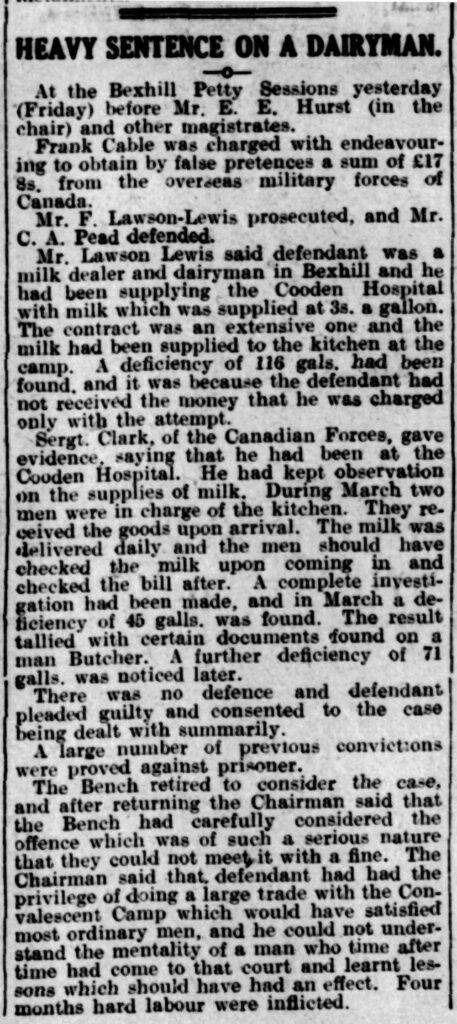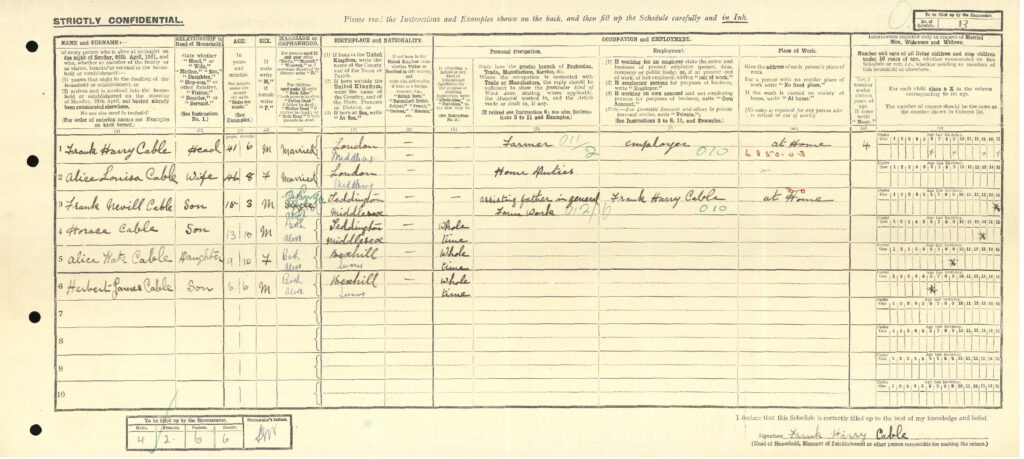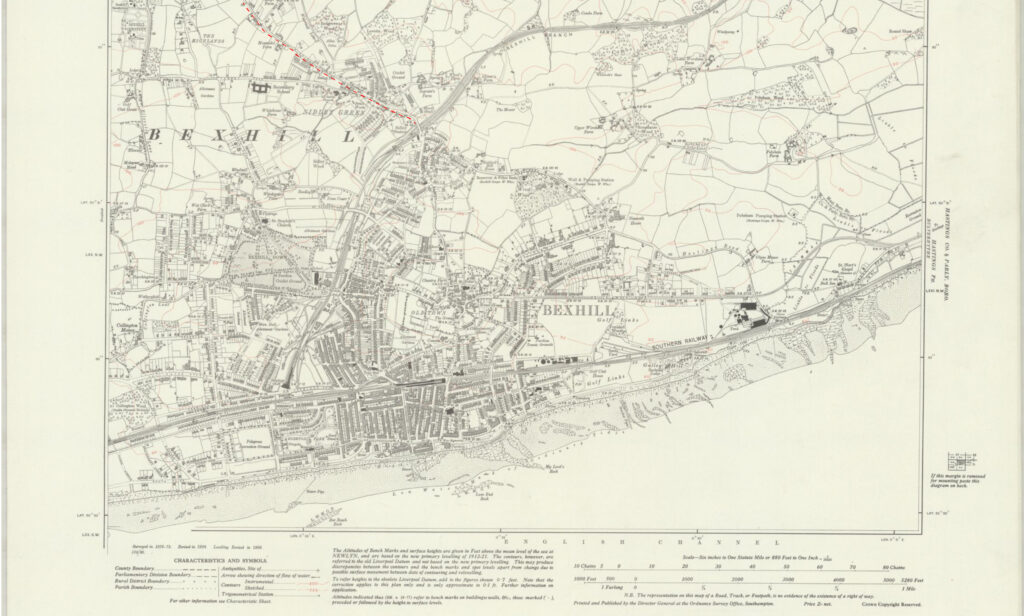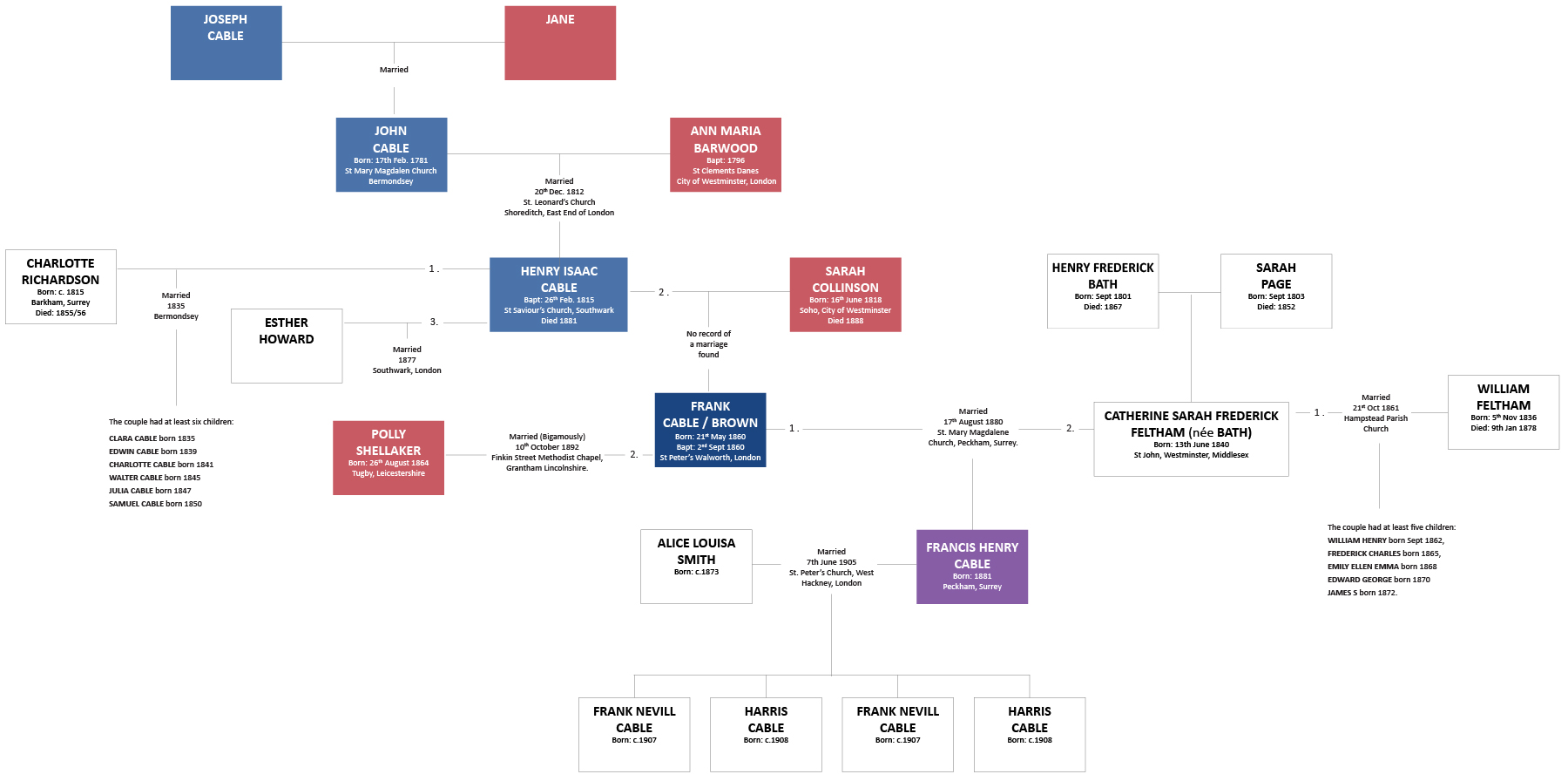CHAPTER VI
Incarceration, with Hard Labour, ends Frank Harry Cable’s career as a Dairyman
1919 – MAY: FRANK CABLE IN FRONT OF THE MAGISTRATES AGAIN BUT THIS TIME IMPRISONMENT!
After many appearances before the local magistrates in Bexhill-on-sea regarding his activities in the dairy, Frank Cable is in front of the bench again, but on this occasion, no fine was issued!
THE CHRONICLE, SATURDAY, MAY 3, 1919
HEAVY SENTENCE ON A DAIRYMAN.
At the Bexhill Petty Sessions yesterday (Friday) before Mr E. E. Hurst (in the chair) and other magistrates. Frank Cable was charged with endeavouring to obtain by faults pretences a sum of £17 8s. from the overseas military forces of Canada. Mr. F. Lawson-Lewis prosecuted, and Mr. C.A. Pead defended.
Mr. Lawson Lewis said the defendant was a milk dealer and dairyman in Bexhill and had been supplying the Cooden Hospital with milk which was supplied at 3s. a gallon. The contract was an extensive one and the milk had been supplied to the kitchen at the camp. A deficiency of 116 gallons had been found, and it was because they defendant had not received the money that he was charged only with the attempt.
Sergt. Clark, of the Canadian Forces, gave evidence, saying that he been at the Cooden Hospital. He had kept observation on the supplies of milk. During March two men were in charge of the kitchen. They received the goods upon arrival. The milk was delivered daily and the men should have checked the milk upon coming in and checked the bill after.
A complete investigation had been made, and in March a deficiency of 45 galls. was found. The result tallied with certain documents found on a man Butcher. A further deficiency of 71 galls. was noticed later. There was no defence and the defendant pleaded guilty and consented to the case being dealt with some summarily.
A large number of previous convictions were proved against prisoner.
The bench retired to consider the case, and upon returning the Chairman said that the offence which was of such a serious nature that they could not meet it with a fine.
The Chairman said that defendant had had the privilege of doing a large trade with the Convalescent Camp which would have satisfied most ordinary men, and he could not understand the mentality of a man who time after time had come to that and learnt lessons which should have had an effect.
Four months hard labour were inflicted.
Bexhill-on-Sea Observer
This trial was also covered in the Bexhill-on-Sea Observer under the headline ‘HARD LABOUR FOR DAIRYMAN’.
The article contained many of the same details, one piece of additional information was that the ‘Defendant had a contract of very considerable extent, receiving £200 to £300 a month in payment for milk to the hospital’
FOOTNOTE: Frank Cable may have served the sentence imposed by the court in Lewes Prison in East Sussex. This prison is located around 25 miles west of Bexhill. However, I have doubts that Lewes Prison was the jail to which Frank Cable was sent in May 1919 as the timing of his sentence do not correspond with the time the prison was operating. Further research is needed.
Lewes Prison
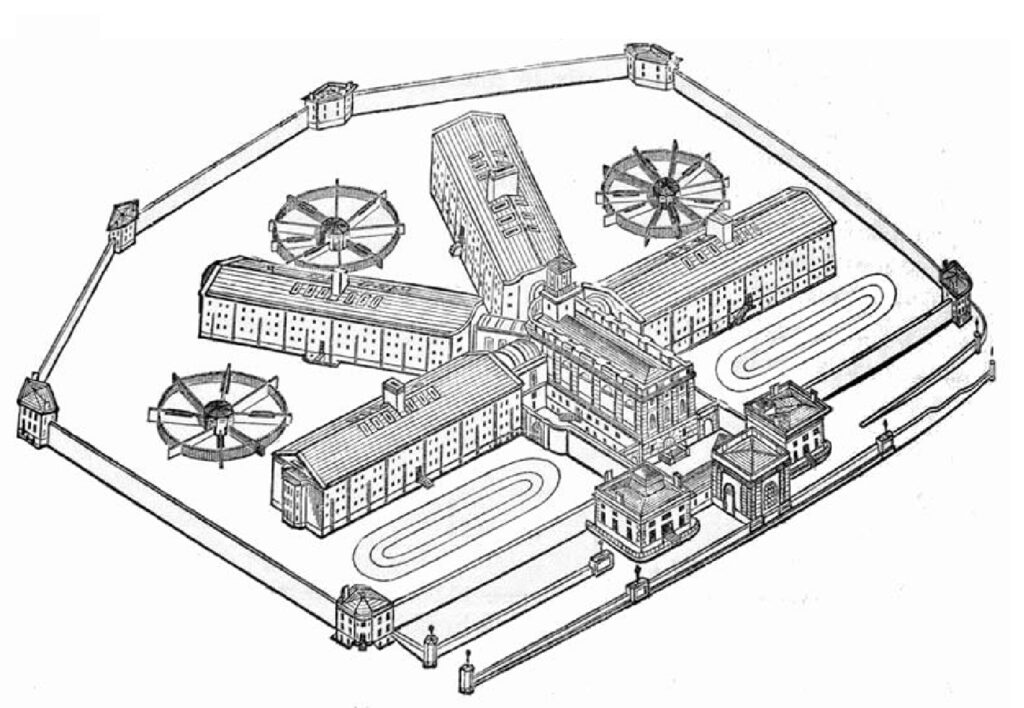 Lewes Prison was a men’s local prison in Sussex and was built between 1850 and 1853 on a site west of the town. The design of which followed the model of Pentonville prison in having a central hall, with four wings around a half-octagonal central block. As shown on the diagram on the right. These four wings separately housed males, females, vagrants and juveniles and debtors.
Lewes Prison was a men’s local prison in Sussex and was built between 1850 and 1853 on a site west of the town. The design of which followed the model of Pentonville prison in having a central hall, with four wings around a half-octagonal central block. As shown on the diagram on the right. These four wings separately housed males, females, vagrants and juveniles and debtors.
Public executions at one time took place on a platform built out from the south-east wall, but after public execution was ended nationally in 1868, they were moved inside the prison. There have been four public executions and eight others at Lewes, the last in August 1914. By the later 19th century, the prison regime had become harder in response to a more punitive mood amongst the public.
During the First World War the prison was emptied: the female wing was closed and the remaining women moved to Holloway. The final prisoners to leave, at the end of 1917, were the Irish rebels from the 1916 Easter Rising for Irish independence, led by Eamon de Valera, the future Taoiseach and president.
Throughout the 1920s, the prison had only a limited remand function, holding those whose cases came before Lewes Assizes. The prison reopened in September 1931.
1919 SEPTEMBER – FRANK NO LONGER THE OWNER OF THE MARINA DAIRY
An advertisement, in the ‘Situations Vacant’ section of the Bexhill-on-sea Observer on 13th September 1919, indicates that Frank Cable‘s involvement with the Marina Dairy has ended. The advert is seeking a ‘Lad, or Girl, for a milk round – Apply D.E. Flux, Marina Model Dairy, Bexhill’.
The ‘D.E. Flux’ mentioned in the advertisement is ‘Dorothy Elsie Gwendolinee Flux‘, a 27 year old unmarried lady, from Newport on the Isle of Wight. She is identified, on the 1921 Census, as a ‘Dairy Shopkeeper‘ and is recorded as an ‘employer‘.
Consequently, it is Miss Flux, and not Frank Cable, who is now the person in charge of the Marina Model Dairy in Bexhill. This change is extremely likely to be directly connected to Frank Cable’s four-month prison sentence in the May of the same year.
1921 JUNE: CENSUS – FRANK IS NOW A FARMER
The 1921 Census was taken on Sunday, 19th June 1921. Initially it was scheduled for 24th April, however, the date was postponed due to industrial action, specifically the Black Friday strike by coal miners, railwaymen, and transport workers. On this date Frank Harry Cable, age 41 years and 6 months, is living with his Alice Louisa Cable, age 46 years and 8 months, together with their four children; their oldest son, Frank Nevill Cable, age 15 years and 3 months, and Horace Cable, age 13 years and 10 months. Both these boys are recorded with a birthplace of Teddington in Middlesex.
Their two youngest children; their daughter Alice Kate Cable, age 9 years and 10 months and Herbert James Cable, age 6 years and 6 months, were both born in Bexhill.
Frank Harry Cable is now recorded as a ‘Farmer’, no longer a Dairyman, and as an ‘employer‘, with his eldest son, Frank Nevill, ‘assisting father in general farm work’. Their three youngest children are in school the ‘whole time‘.
1921 Census – Frank Harry Cable and his family
Click on the image to view a larger picture.
| Name and Surname | Relationship | Age | Sex | Condition | Birthplace | Occupation | Employment | Place of Work |
|---|---|---|---|---|---|---|---|---|
| Frank Harry Cable | Head | 41 yrs 5 mths | Male | Married | London Middlesex | Farmer | Employer | At Home |
| Alice Lousia | Wife | 46 yrs 8 mths | Female | Married | London Middlesex | Home Duties | ||
| Frank Nevill Cable | Son | 15 yrs 3 mths | Male | Single | Teddington Middlesex | Assiting father in general Farm Work | Frank Harry Cable | At Home |
| Horace Cable | Son | 13 yrs 10 mths | Male | Both alive | Teddington Middlesex | Whole Time | ||
| Alice Kate Cable | Daughter | 9 yrs 10 mths | Female | Both alive | Bexhill Sussex | Whole Time | ||
| Herbert James | Son | 6 yrs 6 mths | Male | Both alive | Bexhill Sussex | Whole Time |
Historical Note:
‘Whole time’, against the entry for the three youngest children, reflects their full-time attendance at school.
Whereas the information collected in the ‘Marriage or Orphanhood’ column was to establish the number of children, under 15 years, who were orphans. For the three youngest children, on this record, the entry was obviously ‘Both alive’.
Data collected here was also to determine how many of those, who had been married, were now widowed women.
Research on this 1921 Census, on Findmypast, UK-based online genealogy service, shows the impact of the WWI on the population. This 1921 Census understandably records a far greater proportion of widows than in the previous census of 1911, and 730,000 children were recorded with “Father dead” versus 260,000 with “Mother dead”.
The Family’s Location in 1921
The location of their resident in 1921 is not clear. On the Census cover sheet (below left), it appears to be ‘The Ferns, Ninfield Road, Sidley. Bexhill’. Sidley is a village in East Sussex, 4 miles north of Bexhill. Ninfield Road is the main road between Sidley and the village of Ninfield. As far as I can ascertain Ninfield Road is the only road in Sidley with a name that ends in ‘field’.
The cover sheet of the 1921 Census. The images centre and right show Ninfield Road, Sidley.
Click on the image to view a larger picture.
Ninfield Road, Sidley
Ninfield Road, Sidley is identified by a dashed red line at the top left of the map below.
Ninfield Road, Sidley, near Bexhill. Surveyed 1872-73. Revised 1828.
Click on the image to view a larger picture.
THE CABLE FAMILY – Highlighting the position of Frank Harry Cable c.1921
Click on the image to view a larger image.
Next Page: Magic!


